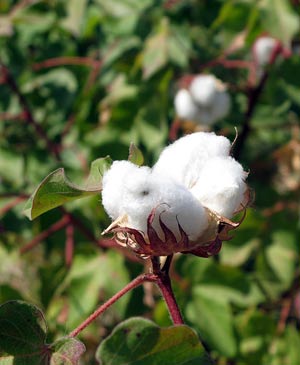 Like a diamond in the rough, you only come across those most precious of websites through digging around and having an open mind.
Like a diamond in the rough, you only come across those most precious of websites through digging around and having an open mind.
Actually I’ve always preferred the image of a pig digging around for truffles, but a) pigs don’t have a particularly good press, despite being a highly intelligent and social creatures; and b) truffles have nowhere near the kudos diamonds have. Ah, such is the way public perceptions drive our lives!
However, if you want a diamond (or truffle) of a sustainability website, you should have a look at the website for The Better Cotton Initiative (BCI).
It doesn’t matter that this is an NGO’s website rather than a commercial organisation’s. How it has its information organised and presented is what matters, and BCI excels at this.
For starters, the homepage is wonderfully straightforward.
“The Better Cotton Initiative exists to make global cotton production better for the people who produce it, better for the environment it grows in and better for the sector’s future”.
These are the only words on the homepage, and I doubt any proponent of sustainability could put it any more succinctly.
Underneath this mission statement is a set of cotton production and harvesting photographs and in the menubar above are the usual but pared down “About Us”, “What We Do”, options.
However the real innovation is the left sidebar, which contain BCI’s timeline. This spans the period from 2009 when criteria for better cotton are agreed, to 2012 when the first harvest will have been gathered and lessons learned fed back into the system.
It’s clean, it’s easy and it’s straightforward. The visitor isn’t given a perplexing number of options to choose from: rather he’s told what the sustainability goal is and given a timeline to the achievement of that goal. These are not facts – they’re aspirations. But they’re expressed without whimsy or PR — and it’s that which makes them so powerful.
It would be unfair to compare the BCI website to that of a major national or global corporation. For starters, the latter has more money to spend and may have a more complicated supply chain. However the BCI website typifies what a good sustainability website ought to do: it informs in a quick and clean manner, without any waffle or obfuscation.
Another example of this is the list of members. Tidily laid out, it lists members by interest area, including logo and hyperlink. Those areas are:
- Civil Society (e.g. WWF, Pesticide Action Network UK)
- Producers (e.g. Farmers Association of Pakistan)
- Retailers (e.g. H&M, Tesco)
- Suppliers (e.g. Amin Mills, NSL Textiles)
- and Associate Members.
Again, it would be unfair to compare this directly to a corporate site, but the simple elegance of the page is very appealing and I cannot help but wonder why many of the high profile retailers listed aren’t so transparent about their supply chains.
Ultimately, it is the same old story of “Keep It Simple Stupid”. Many corporate sustainability websites suffer from too many words and not enough action. The BTI’s website is a great example of getting what matters out there first and not swamping it with detail.
Picture Credit: Cotton, Turkmenistan, Ashgabad by flydime under Creative Commons Attribution License.
A former CTO, Chris has a broad and varied background. He’s been involved with blue chips, consultancies & SMEs across a wide variety of sectors and has worked in Europe, the Middle East and Australia.
In 2007 he decided to combine his knowledge of business and IT with his passion for all things sustainable and has been busy writing ever since. However, his greatest ambition remains to brew the perfect cup of coffee.